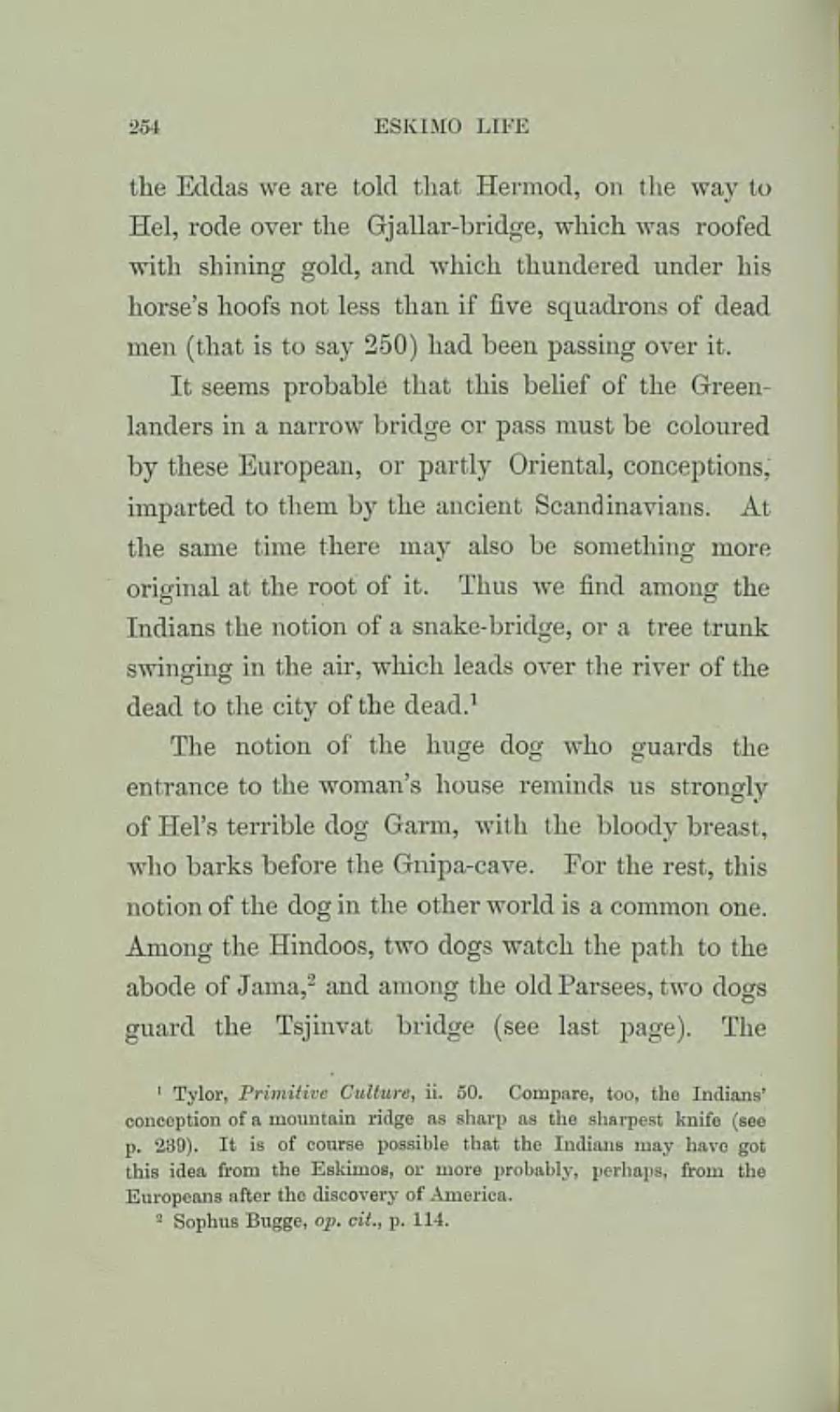the Eddas we are told that Hermod, on the way to Hel, rode over the Gjallar-bridge, which was roofed with shining gold, and which thundered under his horse's hoofs not less than if five squadrons of dead men (that is to say 250) had been passing over it.
It seems probable that this belief of the Greenlanders in a narrow bridge or pass must be coloured by these European, or partly Oriental, conceptions, imparted to them by the ancient Scandinavians. At the same time there may also be something more original at the root of it. Thus we find among the Indians the notion of a snake-bridge, or a tree trunk swinging in the air, which leads over the river of the dead to the city of the dead.[1]
The notion of the huge dog who guards the entrance to the woman's house reminds us strongly of Hel's terrible dog Garm, with the bloody breast, who barks before the Gnipa-cave. For the rest, this notion of the dog in the other world is a common one. Among the Hindoos, two dogs watch the path to the abode of Jama,[2] and among the old Parsees, two dogs guard the Tsjinvat bridge (see last page). The
- ↑ Tylor, Primitive Culture, ii. 50 . Compare, too, the Indians' conception of a mountain ridge as sharp as the sharpest knife (see p. 239). It is of course possible that the Indians may have got this idea from the Eskimos, or more probably, perhaps, from the Europeans after the discovery of America.
- ↑ Sophus Bugge, op. cit., p. 114 .
